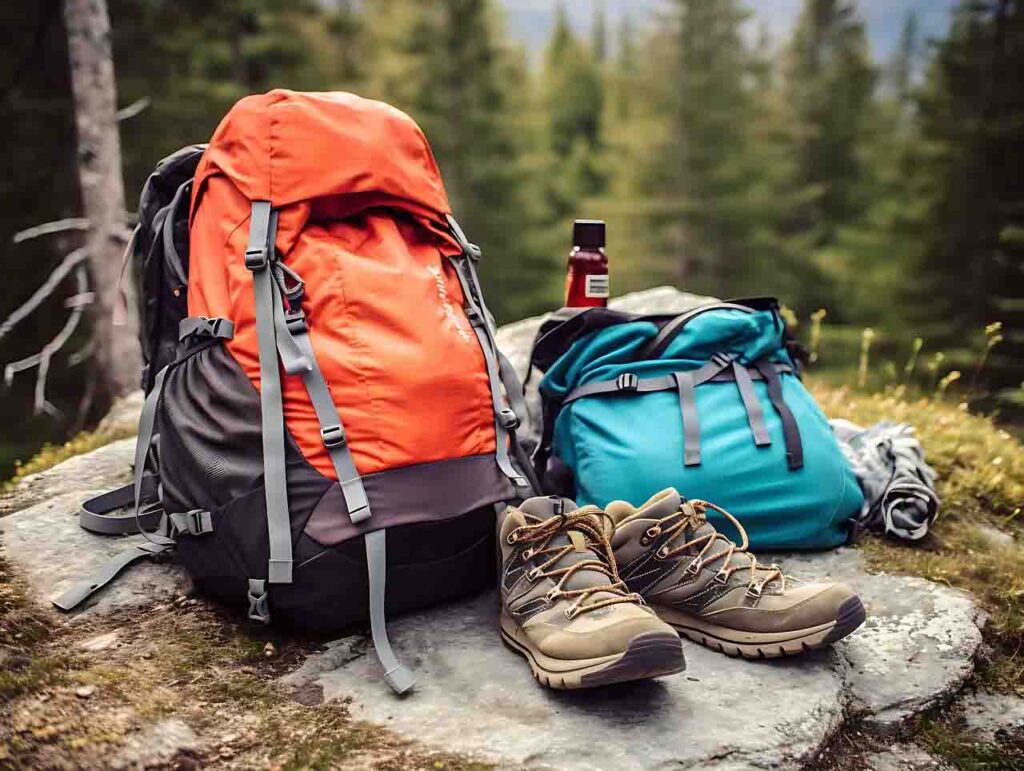Uncategorized
Camping Checklist: What to Pack for Your Next Adventure
Whether you’re a seasoned camper or a first-timer, proper packing is crucial to ensure a smooth and enjoyable outdoor adventure. From sleeping gear to cooking supplies, having everything you need can make the difference between a comfortable trip and a stressful one. To help you prepare, we’ve put together a comprehensive camping checklist that covers all the essentials you’ll need for your next adventure in the great outdoors.
1. Shelter and Sleeping Gear
Your shelter is your home away from home while camping, so it’s essential to pack everything needed for a safe and comfortable night’s sleep.
- Tent: Choose a tent that’s suitable for your group size and weather conditions. Consider a 3-season tent for versatility or a 4-season tent if you’re camping in extreme conditions.
- Groundsheet/Tarp: A groundsheet helps protect the floor of your tent from dirt, rocks, and moisture.
- Sleeping Bag: Make sure to choose a sleeping bag rated for the temperatures you’ll encounter. For cooler weather, consider a mummy bag for better insulation.
- Sleeping Pad: A sleeping pad provides cushioning and insulation from the cold ground, improving your sleep quality.
- Pillow: An inflatable or compact camping pillow will add extra comfort for a better night’s sleep.
- Tent Stakes and Guylines: Make sure you have stakes to secure your tent, and guylines for added stability, especially in windy conditions.
Tip: If you’re camping in colder temperatures, look for sleeping bags and pads with higher insulation (e.g., R-value above 4.0).
2. Cooking and Food Supplies
Whether you’re planning simple meals or gourmet camping cuisine, packing the right cooking equipment and food supplies is essential for a successful trip.
- Camping Stove or Grill: A portable stove is essential for cooking meals, especially in areas where campfires are not permitted. Don’t forget fuel!
- Cookware: Bring lightweight pots, pans, and utensils. Stainless steel or titanium options are durable and easy to clean.
- Cooler: For longer trips, a cooler will keep perishable items like meat and dairy fresh. Be sure to pack ice or ice packs to maintain the temperature.
- Food and Snacks: Plan your meals ahead of time and pack non-perishable foods such as canned goods, dried meals, and granola bars. Fresh fruits and vegetables are great for short trips.
- Eating Utensils: Bring reusable plates, bowls, and cups. Don’t forget forks, spoons, knives, and a bottle opener.
- Water Filter or Water Purification Tablets: Access to clean water is crucial, so bring a portable water filter, purification tablets, or both.
Tip: Pre-cook and freeze some meals before your trip to make mealtime easier, especially on longer outings.
3. Clothing and Footwear
Clothing is essential for comfort, warmth, and protection while camping. Layering is key for adjusting to different temperatures.
- Weather-Appropriate Clothing: Bring moisture-wicking layers to keep sweat off your skin and insulating layers for warmth. Be sure to pack a waterproof jacket and pants if rain is expected.
- Base Layers: A moisture-wicking base layer (top and bottom) is essential for staying dry in cooler weather.
- Mid-Layer: Fleece or down jackets are great for added warmth in cold conditions.
- Outer Layer: A waterproof jacket and pants will protect you from rain and wind.
- Hats and Gloves: A warm hat and gloves are essential if you’re camping in cooler weather. A wide-brimmed hat will also protect you from the sun.
- Footwear: Sturdy hiking boots or trail shoes will provide the necessary support for long treks. Don’t forget moisture-wicking socks and a spare pair of shoes or sandals for around camp.
Tip: Pack extra socks and underwear, especially if you’re heading into wet conditions.
4. Lighting and Tools
You’ll need reliable lighting and tools to set up camp, cook, and take care of any emergencies during your trip.
- Headlamp or Flashlight: A headlamp is ideal for hands-free lighting when setting up camp in the dark. Make sure you pack extra batteries.
- Lantern: A lantern can light up your campsite, providing a warm, ambient glow around the tent.
- Multitool or Knife: A good quality multitool or camping knife is essential for a variety of tasks, from food prep to setting up camp.
- Duct Tape: Always pack some duct tape for emergency repairs. It’s versatile and can fix anything from a torn tent to a broken shoe.
- Rope or Paracord: Useful for tying down your tent, hanging food out of reach, or creating clotheslines.
Tip: Pack spare batteries for your flashlight or headlamp, and make sure you know how to use your tools properly.
5. First Aid and Safety
Accidents can happen, so it’s important to have the proper safety and first aid supplies on hand.
- First Aid Kit: A well-stocked first aid kit should include bandages, antiseptic wipes, pain relievers, blister treatments, and any personal medications.
- Sunscreen and Lip Balm: Protect yourself from the sun with high-SPF sunscreen and lip balm with SPF.
- Insect Repellent: Keep bugs at bay, especially in areas with mosquitoes or ticks.
- Bear Spray (if applicable): If you’re camping in bear country, carry bear spray for safety.
- Emergency Whistle: An emergency whistle can help signal for help if you get lost or need assistance.
Tip: Check your first aid kit before your trip and make sure all items are in good condition and not expired.
6. Personal Items and Extras
Don’t forget the personal items that will keep you comfortable and entertained during your downtime.
- Toiletries: Pack toothbrush, toothpaste, biodegradable soap, and any other personal hygiene items. Consider a portable camping shower if you’re staying for several days.
- Towel: A quick-dry towel is essential for keeping dry and comfortable.
- Camera or Smartphone: Capture your adventure with a camera or phone, but don’t forget extra batteries or a portable charger.
- Notebook and Pen: For journaling or sketching, a small notebook and pen can be great additions.
- Books or Games: Bring along a book, cards, or other games to relax after a day of hiking or exploring.
Tip: Keep your electronics in a waterproof case to protect them from rain or moisture.
7. Waste Disposal
Respecting the environment is crucial when camping. Make sure you pack the necessary supplies to handle waste responsibly.
- Trash Bags: Always pack out everything you bring in, including trash. Bring extra bags to ensure you leave no trace behind.
- Biodegradable Soap: If you need to wash dishes or yourself, use eco-friendly, biodegradable soap to minimize your impact on the environment.
- Toilet Paper and Trowel: In case there are no bathroom facilities, bring toilet paper and a trowel for digging a cat hole to dispose of waste responsibly.
Tip: Check if the campsite provides trash disposal, or if you need to pack out your waste.
8. Additional Items for Specific Activities
Depending on the type of camping you’re doing, there may be extra gear you’ll need for specific activities:
- Fishing Gear: If you plan to fish, don’t forget your rod, reel, bait, and fishing license.
- Climbing Gear: For climbing enthusiasts, pack ropes, harnesses, carabiners, and chalk.
- Water Sports Gear: If you plan on kayaking, paddleboarding, or swimming, make sure you bring your gear, including life jackets.
- Binoculars: For bird watching or scenic views, a good pair of binoculars is a great addition.
Conclusion
A well-packed camping trip ensures that you’re prepared for anything the outdoors throws at you. Use this camping checklist as a guide to make sure you have everything you need, from shelter and food to safety gear and personal items. With careful planning and the right gear, you can focus on enjoying your time in nature, creating lasting memories, and ensuring a safe and comfortable adventure. Happy camping!

